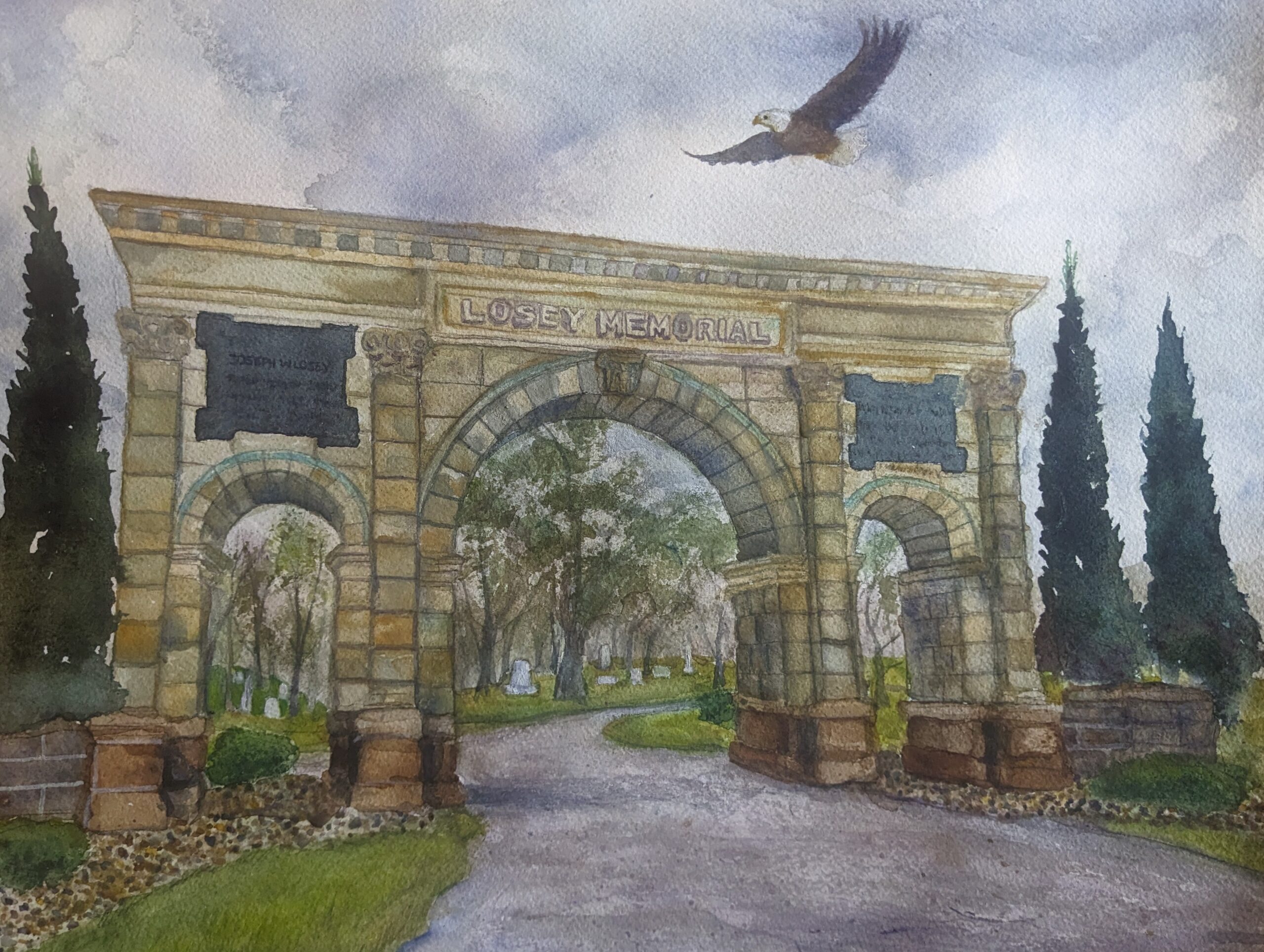Content and Copywriting | Western Technical College | Spring 2022
Not Your Typical Tourist Stop
On a a wicked mid-March day, winter was throwing a final tantrum against the incoming spring. Flurries wafted through hazy skies, never seeming to reach the ground. On chilly days like these, most people would prefer to cozy up in a local café for coffee and conversation with companions.
But I am not most people.
Out of all places to explore in La Crosse, I found myself spirited away to Oak Grove Cemetery, an enchanted pocket of nature in the middle of the city. I would rather frolic around a frigid cemetery than party with people with warm blood and beating pulses.
All my life I have sought sanctuary in cemeteries. Among the living, I can never find the right things to say. The deceased and I, however, have a silent understanding. Like me, they are not avid conversationalists. But with every stone, there is a story to tell if you take the time to stop and listen

Enter the Land of the Dead

The bleak weather set an eerily appropriate backdrop for a stroll through the “Silent City.” At the entrance of Oak Grove, looms the Losey Memorial Arch, built-in 1902. This stone structure is a massive reminder that you are leaving the land of the living and entering the land of the dead.
Oak trees wave their bare branches at me, beckoning me down the meandering paths. Guided by whim and intrigue, I tend to gravitate toward antique headstones. Hand-carved and thoughtfully customized, the old stones have a spirited yet somber beauty. Colorful mosses grow in the cracks of the carvings, enhancing their mystic appeal. My favorite graves are those carved to look like tree stumps. Another grave I stop to marvel at is one shaped like a miniature house. The artistry of this cemetery takes my breath away!


From Wasteland to Wonderland: Oak Grove’s Transformation
Oak Grove cemetery wasn’t always the well-manicured landscape it is today. In the 1860s, locals called the place a “disgrace”. Farm animals barged their way in, brazenly knocking over tombstones as they grazed. Locals would even pilfer pieces of the flimsy fence for firewood. Because no church or group owned the cemetery, there weren’t adequate funds to keep it from falling into disrepair. Luckily, thanks to a few of La Crosse’s founding fathers, Oak Grove Cemetery was transformed from a wasteland to a wonderland. By the early 1880s, Oak Grove had become a source of local pride known for its “vistas of rare beauty”. The beautification of Oak Grove followed a national trend to transform bleak boneyards into park-like settings with the charm of English gardens.


Cemetery Taboo

In modern days, spending leisure time in cemeteries is taboo. Even though they still contain scenic views and rich histories, people now consider cemeteries creepy and people who hang out in them even creepier. Many an eyebrow hath been raised at me gallivanting around graves like a Brontë sister. When most people visit cemeteries, they drop off an obligatory bouquet, then drive away. Mingling with the dead is not socially acceptable.
Why this shift in attitudes toward cemeteries and death?
Because of advancements in modern medicine, death is not as prominent in our lives as it once was. People attend the occasional funeral, but mostly shove death to the back of their minds. Cemeteries remind the living of their own mortality, so they are generally avoided.
Back in Victorian times, however, death was an unavoidable part of life. The young died as frequently as the old. Death profoundly impacted peoples’ everyday lives, and they went through extensive mourning periods. Visiting cemeteries was a way people could convene with their dearly departed by grieving over a grave.
Life After Death?
The 20th century saw America shift from a spiritual to a secular society. This has altered prevalent attitudes towards death. In La Crosse’s early days, Christianity dominated cultural beliefs. People fervently believed that death was not the end and that an idyllic afterlife awaited them. Thus, they did not fear death to the degree our modern society does. The uncertainty of what happens after death evokes more fear than death itself.
Regardless of our spiritual beliefs, we must recognize that there is beauty in death. Without death, we would not fully appreciate life. We would take our experiences for granted. Death is not the end but a necessary step in the ongoing cycle of life. Life sprouts from death like moss growing on a grave.
Interested in taking a stroll through the Silent City? Download a Walking tour map on Oak Grove Cemetery’s website and learn more about the cemetery’s fascinating history.
About the Author

Danielle Schmitz is a local artist and digital marketing student at Western Technical College. Activities she enjoys in cemeteries include reading, writing, drawing, and imagining history.
As a teenager growing up in Jackson County, she helped her grandfather care for a small rural cemetery full of her deceased ancestors. This fostered her love of cemeteries and tender affection for the dearly departed.
Resources
History of Oak Grove. n.d. <https://www.oakgrovecemetery.com/>.
Jackson, Charles O. “American Attitudes to Death.” Journal of American Studies (1977): 297-312. Article.
Lichtfuss, Erika. “Beautifying Oak Grove Cemetery.” 7 September 2019. La Crosse Public Library. Ed. Jenny DeRocher. Article on Web Site. 23 March 2022. <https://archives.lacrosselibrary.org/blog/beautifying-oak-grove-cemetery/>.
Meier, Allison. “When Cemeteries became Natural Sanctuaries.” 11 April 2019. JSTOR Daily. Article on Website. 24 March 2022.